[NYC skyline created on an overpass chain link fence with blue plastic bags]
Graffiti has been over-exposed in popular culture for quite a few years now. I mean if John Mayer features it in one of his music videos you sort of know it's run it's course in relation to pop culture. It's actually pretty sad how the media machine often destroys the essence of what made something once great, but that's a topic within itself and I digress...
What I want to write about is not your standard painted graffiti, but clean graffiti. Clean graffiti also called reverse graffiti, dust graffiti or grime writing is created by subtracting layers of dirt from a surface or adding non-painted layers. Often times city officials dislike this form of urban art because it makes it very apparent just how filthy our cities have become, however since no damage is done it's nearly impossible to prosecute for clean graffiti.
We've all seen reverse graffiti although perhaps we didn't know it's official name. For example if you've ever seen a dirty car that had "Wash Me" written on the back window there you go!
Clean graffiti is not a new method and has been around for a long time. It's also much more difficult to produce than just you're standard painted graffiti as it requires cleaning years of dirt, oil and/ or grime from streets and walls with scrubbing or pressure washers and sometimes a detergent. The image is created through the contrast of dirty and clean, so basically by working in reverse of a typical style of drawing. Hence the name reverse graffiti. So for these artists a long dirty wall is simply a massive canvas!
For anyone without art experience it's probably hard to visualize, so lets get right into some examples of artists doing this and their work.
The most well known Clean Graffiti artist is Paul Curtis, or Moose, from the United Kingdom. Moose is considered to be the godfather of reverse graffiti. For the most part his tools are simply a brush, water and elbow grease. He's also formed a small company called Symbolix for commercial advertising campaigns using reverse graffiti. Below is a video directed by Doug Pray for the Reverse Graffiti Project showing the process Moose uses to create one of his pieces in a tunnel in San Francisco.
I should mention that reverse graffiti isn't without media exposure. It has been used by brands like Smirnoff, BP, XBox and MSN since as early as 2004.
Another reverse graffiti artist is Brazilian Alexandre Orion. One of his pieces was in a tunnel in Sao Paulo where he scraped away years of soot to draw hundreds of skulls. Jose de Souza Martins a Professor of Sociology at the Universidad de Sao Paulo describes the project as; "Skulls, one after another. From ocular cavities of so many dead, his work looks out on the living and interrogates people passing by; it quietly criticizes our omission, our comfortable acceptance of pollution."
[Orion at work Image from his website]
Without closer inspection it is almost impossible to believe that reverse graffiti like this isn't done with paint. It is unbelievable just how dirty our cities truly have become. Sao Paulo officials were not pleased with this particular piece, but unable to charge Orion with anything they instead power washed the entire tunnel. So in the end Orion's mission was successful and the city became a little cleaner. While Orion's work seems to me more politically and environmentally motivated it is no less appealing.
[from Orion's Website]
Going back to dirty cars. Scott Wade, an American artist, uses dusty cars for his canvas to create his own version of clean graffiti. These pieces are incredibly detailed and vary greatly in content from Mt. Rushmore to Landscapes to the Mona Lisa. He has an extensive gallery of his work at his site Dirty Car Art.
[Scott Wade's Mona Lisa from Dirty Car Art Gallery]
Last, but not least is the work of New York City street artist D. Billy. Billy uses primarily balloons and artist tape to create his whimsical pieces. The following is his artist statement regarding his work:
"Using colorful media such as twisting balloons, party streamers, and artist tape, I have begun to add visual representations of sound effects to public spaces as a sort of dimensional graffiti. After embellishing the found scenes and photographing the results, I leave my additions in place to engage passers-by for as long as the materials hold up. For me, this process encourages a reexamination of surroundings and objects that are usually taken for granted, and injects a hint of the fantastical surreality that I have established in my other work.
Or, at the very least, I hope someone thinks these things are kind of funny."
[D Billy - NYC subway - Balloons]
[D Billy - NYC - Fire Hydrant]
Perhaps what is most compelling about the work of these 4 artists is the temporality and organic nature of their pieces. Especially with the true reverse graffiti of Moose, Orion and Wade. Overtime you know that pollution will again build up and slowly erase their creations or in the case of Wade a good rainstorm and all that's left is a memory. In any case all of these artists are successful in for at least for a moment getting passersby to stop and look at their surroundings a bit closer and even laugh at the mundane. So there you go. 4 artists trying to re-think street art in a non-destructive way.

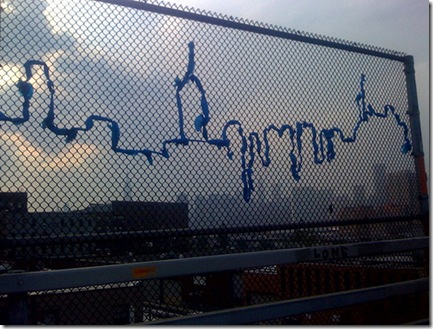
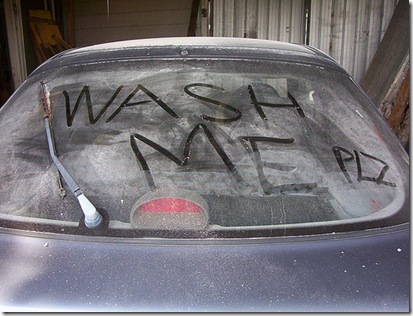
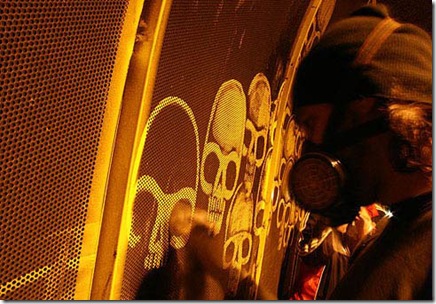
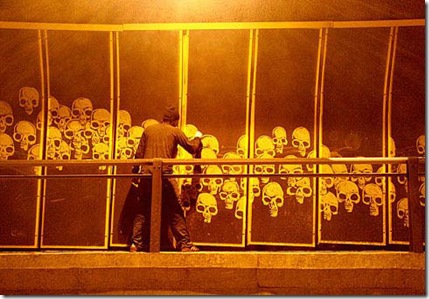
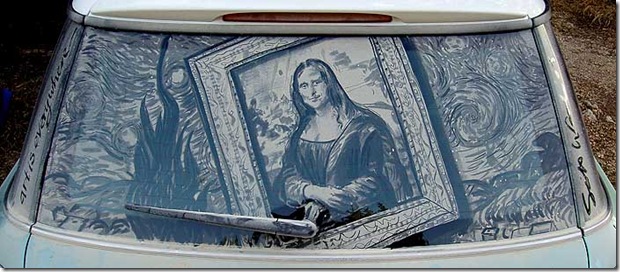
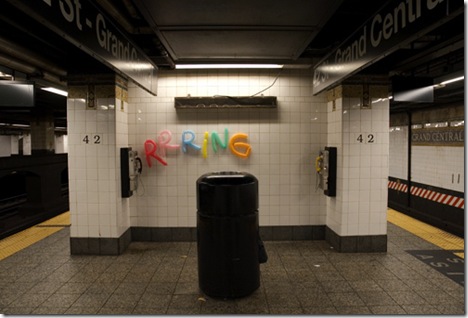
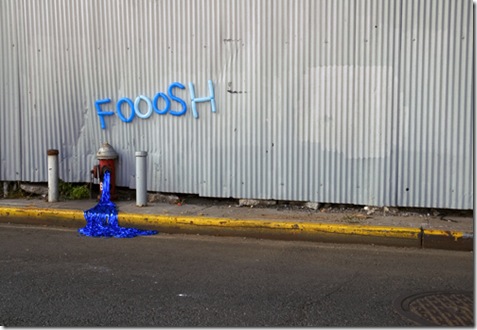
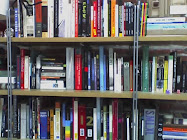

1 comment:
Never thought someone would make such interesting reverse art since they are so temporary. Wow I'm impressed.
Post a Comment